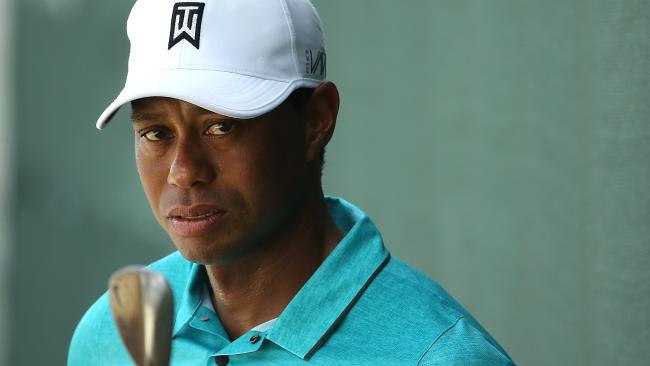



Nike and Tiger Woods sold us a lie.
THERE are times when that Nike swoosh can both resemble and act like a boomerang.
Nike last week announced it’s getting out of the golf-gear business. Business analysts have given business reasons, none of them in line with what I’ve seen, think and, perhaps, know.
Nike, beginning with its partnership with Michael Jordan’s obscenely overpriced signature sneakers, has always relied upon creating a feeding frenzy among impressionable and especially vulnerable males, starting with gotta-have-’em 12-years-olds.
In this case, however, Nike was barking up the wrong money tree. Golfers aren’t as impressionable or as vulnerable as high school kids who would equate a $225 pair of Third World, made-on-the-cheap Air Jordans to neighbourhood status symbols.
Golfers generally don’t pursue what Nike is so practiced and expert at selling — golfers don’t seek street cred.
Nike’s golf rise and fall began in the mid-1980s, with reasonably priced golf shoes to compete with other brands.
But in 1996, Nike’s blood began to rush to its head with the signing of Tiger Woods, the instant he turned pro, for $40 million over five years.
Funny thing about that day: Everything was instantly in place, all the deals were already done. Woods’ father, Earl, had been on the payroll of the rep firm IMG long before his son was delivered to IMG. Earl had been hired as an IMG “talent scout”, his salary funding Tiger’s far-flung and expensive amateur career.
And while he was still an amateur, IMG had made his deal with Nike — unless we’re to believe that the Nike/Tiger deal was negotiated and signed moments after he turned pro, then Nike/Tiger TV commercials were scripted, produced and shipped in the following few hours.
The late Frank Hannigan, as the former director of the USGA, was the only one with the guts and knowledge to identify Woods’ “amateur” career as a sham, that his father was paid to fund his son’s golf, then to deliver him to IMG, which delivered him to Nike even before he technically turned pro.
Hannigan concluded that the USGA didn’t, in Woods’ case, enforce its rules on amateurism — it gave Woods a free pass — because it feared accusations of racism.
And then the Nike “attitude” sell began. In his first Nike TV ad, Tiger, who had previously claimed he never wanted to be thought of as a “black” golfer or even one of African-Asian mix, but only as a golfer, spoke of himself as a victim of racism — specifically how there are courses in the US that he’s not allowed to play.

With Tiger Woods, Nike cranked up its golf gear business without bothering to check two things: adults aren’t as easily conned as kids, and street cred on golf courses, even among the young, is worthless.
Sounded strong, but it was nonsense. Woods by then already was such a big name that if there truly was a course that would deny him playing access based on his race, he couldn’t name it. However, despite his Nike-assigned commercial social activism, Woods did regularly play clubs that disallowed women.
Older black pros, including Jim Thorpe and Lee Elder, resented Nike’s sell as a con, for it was they, not Tiger Woods, who had crashed pro golf’s racial barriers.
Woods also was portrayed by IMG, Nike and the media as the fellow who would strip golf of its exclusionary fences, someone whose name and presence would give America’s poor kids — especially African-American kids — cause to play golf.
That, too, sounded good, but Nike, as a golf retailer, played the Air Jordans/status-symbol hand. Woods’ signature clubs, shoes and shirts became the most expensive on the shelves.
In the end, Nike’s golf division operated off the same marketing plan that would stoke the desires of 15-year-olds with little sense of proportion and no sense that they’re being had.
But most amateur, weekend golfers played Nike clubs, wore Nike spikes and swung at Nike balls because they, for the moment, liked them, and in the case of Nike balls, because they found them.
And those who didn’t play with Nike gear played with the gear they liked, and there were and are many good brands from which to choose. Swoosh status was never an issue.
With Tiger Woods, Nike cranked up its golf gear business without bothering to check two things: adults aren’t as easily conned as kids, and street cred on golf courses, even among the young, is worthless. – news.com.au